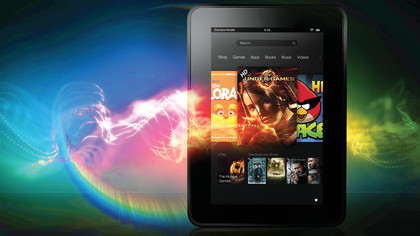Budget Android tablets: which one is right for you?
Which of the cheaper Android devices suits your needs?
Some of the cheaper tablets skimp here to save money, and only offer 512MB, which means the multitasking aspect of Android - one of its key boasts - is compromised, and performance is inevitably slower all round. At least 1GB of RAM ought to be the minimum to run Android 4.0 with any degree of success, and that's something that most of the sub-£100 tabs are actually offering today.
Brands for less

Thanks to the insane level of competition in the Android tablet world, you don't have to stick with the no-name models if you're looking for a good deal. Samsung's second-generation Galaxy Tab 2 models have been reduced to under £200, while Motorola's Xoom, and its Xoom 2 sequel, can be picked up for around the £150 to £200 mark, giving you some seriously well-made technology for the money.
The problem with Samsung's models, for some people, is the manufacturer's continued use of its TouchWiz interface. While TouchWiz is great when used on a mobile phone, it makes a tablet feel like, well, just an enormous phone. It kind of takes the fun out of owning and exploring a new machine when it's running the same OS as your mobile.
Plus, makers such as Amazon take the skinning of Android even further, with the new Kindle Fire HD (£159), completely hiding most of Android's best features in favour of Amazon's own user interface. Yes, it's an Android tablet, but it's an entirely different experience to the rest of the pack, and something you may or may not prefer.
Also down to personal preference is your display size. For some, a 7-inch screen is more than enough, while others prefer the larger 10-inch option. In practical use, the only real hindrance of the smaller option is having to be a little more precise with your presses around the edges of the screen.
Google hides lots of Android functionality behind software toggles in the corners of the display, so for the big-fingered technology fan, the extra space afforded by the larger models is something to consider.
Cheaper tablets, with their fatter, chunkier bezels, also make getting to the edges of the display a little tougher, too.
Sign up for breaking news, reviews, opinion, top tech deals, and more.
Can it be updated?
The majority of the cheaper Android tablets under the £100 mark will arrive with an unskinned vanilla version of Android, untouched by the maker. While this is a good thing for most, because you're getting the purest vision of what Google and its team think Android should represent, it probably means you'll be stuck using the same version for life.
The advantage of spending a little more money on a branded machine from a western company means you should at least see some updates to the tablet's OS when Google releases a new version. That's one big reason people are plumping for the Nexus 7 in such large numbers, because with Google's official backing, it ought to be first in line to see upgrades to future versions of Android, while it's unlikely there will be any such easy upgrade path for your random £70 Chinese SuperTab 7G XL.
Some companies have shown they're in it for the long term, and have won over fans with their approach to OS upgrades. Asus, for example, is continually releasing updates for its excellent Transformer series of machines, but those are high-end devices for which you'd expect a little more support.
In terms of the budget Android tablet makers, little French company Archos leads the pack in rolling out upgrades and supporting users, with owners of its cheaper machines benefitting from quite a few updates, including the newer versions of Android and minor bug-fixing repairs.
So don't just look at the hardware alone. Cheap tablets shouldn't be disposable and you have every right to expect some level of support from the manufacturer over the next year or two. And that's worth paying a little extra for.
3G and connectivity
Another consideration is whether you're the outdoorsy type or not. To save money, most of the cheaper tablets, and even Google's Nexus 7, ditch 3G connectivity, so you're stuck with using Wi-Fi to assess online features and download apps.
If you've got used to piggybacking on friends' and pub Wi-Fi, that won't be an issue for you, but it's one of the reasons the cheap tablets are so very cheap, so bear it in mind.
Finally, something of an Android hot potato at the moment is support for upgrading the onboard storage. Many of the phone and tablet makers seem to be moving away from offering SD card support, with even the Nexus 7 failing to include it. Ironically, that's one area where the cut-throat super-budget Chinese tablet scene always emerges as a winner, with virtually all of the cheapest Android models including an SD card slot.
Again, as with 3G, it's down to personal choice, and whether you want or need the ability to shuffle around your media on SD cards.